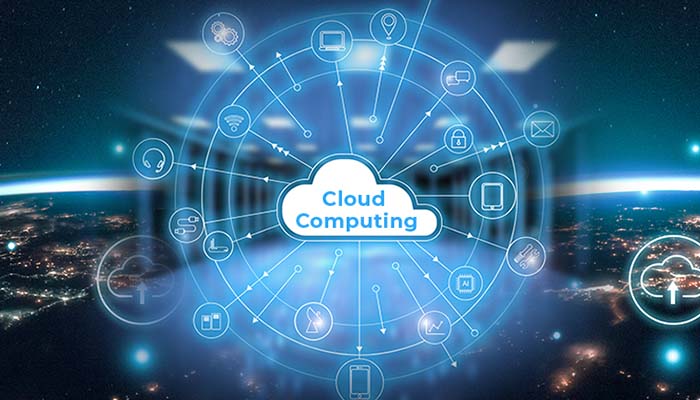Education & Career Trends: May 1, 2023
Curated by the Knowledge Team of ICS Career GPS

- Excerpts are taken from an article published on entrepreneur.com
Cloud computing has taken the world by storm. It’s a meaningful, effective way to provide software and computer resources to people around the globe. Hence, enterprises and businesses of all levels now use cloud computing for various needs.
It’s widely known that cloud storage does not involve big data; instead, it deals with physical servers and operating systems.
Below is a breakdown of everything you need to know about cloud computing, including what it is, how it works and the types of cloud computing you may encounter.
What is Cloud Computing?
Cloud computing is the internet-based, on-demand delivery of platforms, applications and other IT resources from one terminal to another.
Without cloud computing, a company must typically create or purchase its software, and then host that software on its own data centres, servers, hard drives or computers. For instance, a company might buy project management software and install the software using a disc.
Cloud computing instead transmits the information needed for software — such as a project management platform — over the internet, which corporate computers then access on the fly.
The company’s computers connect to the internet, access the project management software provider’s servers, and the information for the project management software is downloaded straight to those terminals.
In this way, cloud computing allows organisations of all sizes to access IT resources without purchasing, owning and maintaining the data centres and services necessary to carry out IT tasks.
Cloud computing provides organisations with more bandwidth and cost savings, allowing access to open-source data without having to house massive computer mainframes on-site.
How does Cloud Computing work?
Cloud computing allows client devices, like computer terminals, to access cloud applications and data over the internet. Those applications and data are stored remotely — off-site from the end-client — servers or computers.
With a cloud computing solution, the front end — such as a corporate computer terminal — connects to the internet, then to the back end — such as a cloud services provider. The cloud services provider maintains servers, computers and databases where information, apps, and platforms are stored.
The front and back ends communicate over the internet via a central server. The server uses specific protocols and is commonly used to exchange data quickly and seamlessly.
Meanwhile, businesses or end-users don’t need to retain on-premises IT infrastructure. Such companies can complete their workloads, optimise for productivity and use modern development tools or cloud security tools for sensitive data storage.
If this seems futuristic and highly technical, that’s because it is. Modern cloud computing relies on automation technologies and virtualisation to a great degree. However, cloud computing is now reliable and beneficial enough to replace purchasing and installing software on home computers for many organisations and purposes.
Types of Cloud Computing
Technically, you or your business can pursue many different types of cloud computing. Here’s a breakdown of the significant types of cloud computing:
1. SaaS — Software as a Service
- SaaS or software as a service cloud computing is what it sounds like the delivery of software services, like programs or applications, over the internet. For example, Microsoft Office 365 is a type of SaaS application.
- Furthermore, the majority of enterprise-level applications, like ERP suites from Oracle or SAP, are available on the cloud in SaaS formats.
- Regardless, SaaS cloud computing is the most common type of cloud computing because businesses can use it to access critical programs or apps from afar without having to install or purchase those apps on their home computers.
2. IaaS — Infrastructure as a Service
- IaaS or infrastructure as a service cloud computing provides virtualised storage, networking and computing power over the internet on a case-by-case or pay-per-use basis.
- For instance, if your server requires extra resources, you can get them from a cloud computing provider.
- Then, as traffic for your website or server decreases, you can relinquish those resources and give them “back” to the cloud computing provider.
- In this way, you only have to pay for the cloud infrastructure or IT resources you need, so you don’t waste money.
- This type of cloud computing is part of what makes cloud computing, in general, highly scalable and flexible.
3. PaaS — Platform as a Service
- PaaS or platform as a service cloud computing offers services and workflows for developers, who often use different processes, tools and APIs to create, test and deploy applications.
- Salesforce Platform and Salesforce Heroku are examples of PaaS offerings, as are OpenShift and Cloud Foundry.
4. FaaS — Function as a Service
- FaaS, or function as a service cloud computing, is technically serverless computing. It’s also primarily used by developers.
- This type of cloud computing service prevents developers from seeing or altering anything beneath their code stacks.
- In this way, developers can focus on uploading functional blocks of code and combining them with other processes or code chunks.
- FaaS products include AWS Lambda, Google Cloud Functions and IBM Cloud Functions.
…
Have you checked out yesterday’s blog yet?
6 Vital Ways To Deal With Stress
(Disclaimer: The opinions expressed in the article mentioned above are those of the author(s). They do not purport to reflect the opinions or views of ICS Career GPS or its staff.)




One Reply to “What Is Cloud Computing?”